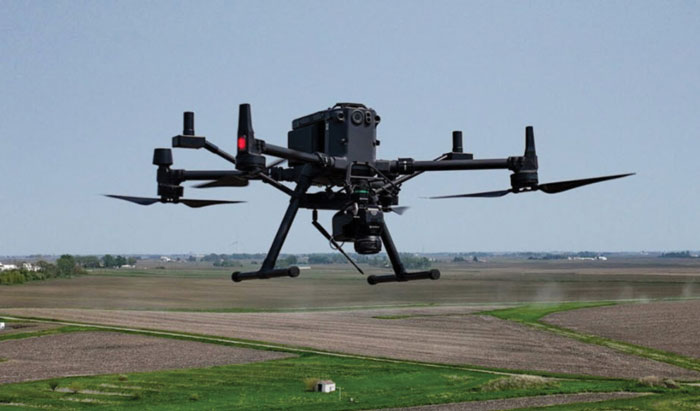Recent digital technology improvements have spawned the ability to scan entire fields quickly and inexpensively with drones, then provide maps identifying specific weeds and their locations — all in about 12 hours.
For the past 3 years, Minnesota-based plant analytics service Sentera has been proving its in-house designed sensors are capable of pin-pointing specific weed species as small as ¼ inch and verifying those findings with university-based ground-truthing research. The correlations of what Sentera’s drones are seeing and what agronomists on the ground find are about 99%.
Eric Taipale, Sentera’s chief technology officer and founder, says the improvement in sensor resolution plus a corresponding recent leap in digital technology will make significant improvements in farm ROI by reducing herbicide use. Sentera’s technology allows full fields of drone footage to be analyzed in a readily usable form without stitching several files together.
In the Field
Sentera’s Aerial WeedScout has been under beta testing on about 10,000 Corn Belt acres over the past 3 seasons and has shown 70% savings in herbicide costs over traditional full-field broadcast applications.
“When we overfly a field, we know exactly which species of weeds are present and where, and that enables agronomists on the ground to determine the appropriate crop protection product and the quantity needed to treat the infestations,” Taipale says. “By treating only the areas affected by weed pressure, additional herbicides no longer will be applied to unaffected crops. The savings can be astounding.”

Within 24 hours of drone deployment, aerial weedscout’s targeted herbicide prescriptions are digitally delivered and seamlessly integrated with any precision sprayer. This optimizes chemical use and reduces non-residual herbicide costs by up to 70%, according to Sentera. Sentera
Sentera began developing Aerial WeedScout in 2018, and part of that R&D includes new sensors capable of 1.5 mm resolution per pixel. That clarity, combined with the company’s artificial intelligence (AI) library of plant characteristics developed over 10 years of crop stand and crop condition sensing, enable early detection of weeds at optimum growth stages for herbicidal control. Growers or their farm service organizations can fly the fields and have actionable maps to develop weed control prescriptions within about 12 hours.
Satellite imagery generally lacks such a sharp eye and often requires days to provide decision-making information.
“Timing is a great selling point for Aerial WeedScout, but the new system also puts a new level of precision within easy reach of anyone with a sprayer with nozzle or section control,” says Brian Wenngatz, Sentera CEO. “Our system is flexible and can be accessed directly with on-farm drones or through our extensive pilot/drone network across the U.S.”
Cost Savings
Wenngatz and Taipale are confident Aerial WeedScout offers upfront and long-term savings to no-tillers who recoil at the cost of new AI-equipped sprayers and weeders that incorporate on-board sensing and AI-directed application.
“Initially the program eliminates the need for new equipment,” Taipale says. “While we are a two-step system, we can run sprayers at normal field speeds with accurate application and not have to slow down to give the machine time to see and spray target weeds.
“If a custom applicator has to reduce speed by X% to accomplish the job, that machine is X% less productive than a machine running at normal field speeds. In that case, if I’m a custom applicator, I have to buy and maintain more machines than I would if I used Aerial WeedScout and a traditional sprayer. That represents increased capital costs and labor/operational costs year after year.”
“By treating only the areas affected by weed pressure, the savings can be astounding…”
Both agree their two-step system is more than competitive with on-board AI applicators. The savings accrue with reduced supply chain costs in herbicide use and related handling, optimizing logistics of herbicide delivery with smaller orders and requiring fewer sprayers to service a given job. Sentera is quick to note it is not in the agronomy business and does not write crop protection prescriptions.
“We are building relationships with a number of OEMs, farm service organizations and crop protection suppliers to serve their agronomists on the ground,” Wenngatz says. “We just wrapped up our technology validation trials for 2024, and the next step is to huddle with our commercial partners in preparation for a limited commercial release of Aerial WeedScout in 2025.
“We’ve been providing a pilot network for years to collect field data for our agricultural analytics projects, so we can collect millions of acres of data today for our retail business and we have significant capacity to grow with Aerial WeedScout.”






